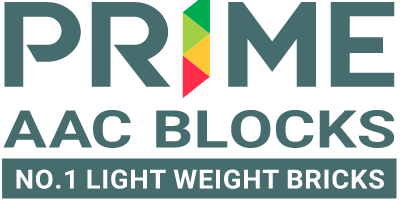
Future of AAC Blocks
Introduction :
AAC (Autoclaved Aerated Concrete) blocks have a promising future in the construction industry due to their unique properties and sustainable advantages. Here are some key aspects of their future:
Sustainability: With an increasing focus on environmentally friendly construction materials, AAC blocks stand out for their low environmental impact. They are made from natural materials like sand, cement, lime, and aluminum powder, and their production process emits less CO2 compared to traditional concrete blocks.
Energy Efficiency: AAC blocks offer excellent thermal insulation properties, which contribute to energy savings in buildings. Their porous structure and lightweight nature help in maintaining comfortable indoor temperatures, reducing the need for excessive heating or cooling.
Ease of Construction: AAC blocks are lightweight, making them easy to handle and transport. Their larger size compared to traditional bricks also speeds up the construction process, resulting in cost savings for builders.
Durability: Despite being lightweight, AAC blocks are durable and resistant to fire, pests, and moisture. This durability ensures long-term structural integrity, reducing maintenance costs over the lifespan of a building.
Innovations in Production: Continuous advancements in manufacturing techniques and technology are improving the quality and versatility of AAC blocks. This includes innovations in raw material sourcing, production efficiency, and product customization to meet specific project requirements.
Market Growth: The global AAC market is expected to witness significant growth in the coming years, driven by urbanization, infrastructure development, and the demand for sustainable construction solutions. Emerging economies, in particular, are increasingly adopting AAC technology due to its cost-effectiveness and environmental benefits.
Regulatory Support: Many governments and regulatory bodies are promoting the use of sustainable building materials through incentives, certifications, and green building standards. AAC blocks often qualify for these initiatives, further driving their adoption in the construction industry.
Integration with Smart Building Technologies: As the construction industry embraces digitalization and smart building technologies, AAC blocks can easily integrate with these systems. This integration can enhance building performance, energy efficiency, and overall occupant comfort.
conclusion :
In conclusion, AAC blocks are poised to play a significant role in the future of construction due to their sustainability, energy efficiency, durability, and ease of construction. As the industry continues to prioritize environmentally responsible practices, AAC blocks are likely to become increasingly prevalent in building projects worldwide.
